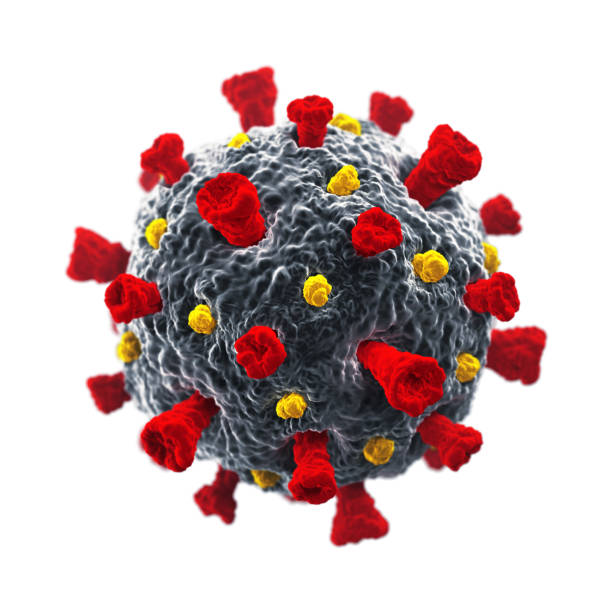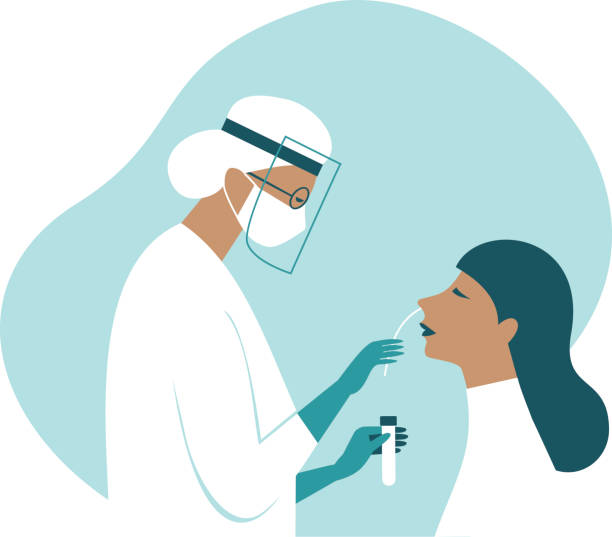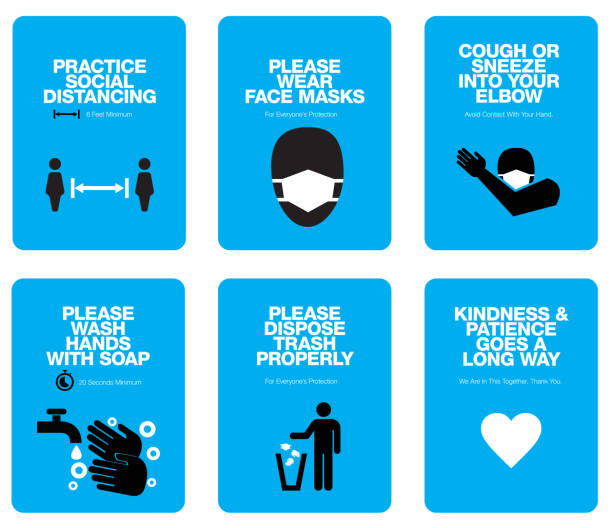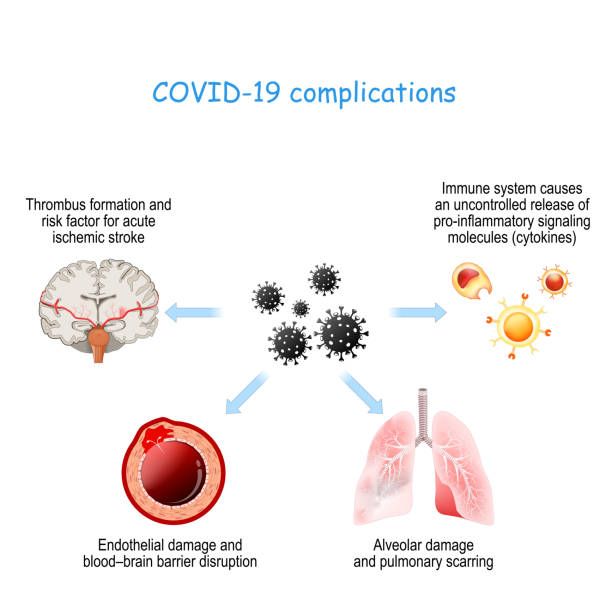
COVID-19, also known as Coronavirus, is an infectious disease caused by SARS-CoV-2 (Severe Acute Respiratory Syndrome Coronavirus 2). Coronaviruses were named in 1968 for their appearance. The spikes on the outer edge of the virus resemble a crown (corona means crown in Latin). The disease originated in a food market in Wuhan, China, in December 2019. It is thought to be a zoonotic infection (a disease spread from animals to humans). The earliest known infection occurred on 17th November 2019. It has since spread globally, via human-to-human transmission, resulting in the 2019–20 coronavirus pandemic.
Other variants of the coronavirus are responsible for the common cold, influenza, and SARS, to name a few. In February 2020, World Health Organization chief Tedros Adhanom Ghebreyesus announced that COVID-19 is the official name of the disease. CO stands for corona, VI for virus and D for disease, while 19 is for the year that the outbreak was first identified; 31 December 2019. The name was chosen to avoid references to a specific geographical location (i.e. China), animal species, or group of people, in line with international recommendations for naming aimed at preventing stigmatization.
How Is It Spread?

The virus is typically spread during close contact and via respiratory droplets produced when people cough, sneeze, talk or exhale.
It may also spread when one touches a contaminated surface and then their mouth, eyes or nose. The virus can live on surfaces up to 72 hours.
The lungs are the organs most affected by COVID-19. The virus also affects gastrointestinal organs. It is most contagious when people are symptomatic, although spread may be possible before symptoms appear. People remain contagious for up to 20 days, and can spread the virus even if they do not develop symptoms.
Symptoms

Time from exposure to onset of symptoms is generally between two and fourteen days, with an average of five days. Some people with mild infection may be asymptomatic. At least a third of people who are infected do not develop noticeable symptoms. 81% of those who develop symptoms have mild to moderate symptoms (up to mild pneumonia) and recover without requiring special treatment. 14% develop severe symptoms (dyspnea, hypoxia, or more than 50% lung involvement on imaging), and 5% develop life threatening symptoms (respiratory failure, shock, multiorgan failure).
Common symptoms include:
- Fever
- Dry cough
- Fatigue
Less common symptoms are:
- Sputum production
- Sore throat
- Sneezing- Runny nose
- Loss of taste
- Loss of smell
- Chest tightness
- Palpitations
- Hemoptysis
- Muscle pain
- Joint pain
- Headache
- Nausea
- Vomiting
- Diarrhea
- Chills
- Conjunctival congestion
- Skin rash
Emergency (life threatening) symptoms include:
- Difficulty breathing
- Persistent chest pain or pressure
- Confusion
- Difficulty waking
- Excessive drowsiness
- Bluish face or lips
Immediate medical attention is advised if these symptoms are present. In some, the disease may progress to pneumonia, multi-organ failure, and death.
Severe cases are most common in:
- Older adults (those older than 60 years and especially those older than 80 years)
- People who are obese (BMI of 30 or higher)
- Pregnant women
- People with pre-existing (underlying) conditions, including hypertension, diabetes, cardiovascular disease, cancer, kidney disease and sickle cell anemia
- People with weakened immune system after organ transplantation
- Smokers and people with asthma and other pre-existing respiratory diseases.
If you, or someone you know, has any of the above symptoms, please contact the National Center for Disease Control (NCDC). Their contact information is listed above. You can also get daily updates on the NCDC and WHO websites.
Diagnosis

COVID-19 can be provisionally diagnosed on the basis of symptoms and confirmed using the following tests:
- Real-time reverse transcription polymerase chain reaction (rRT-PCR) testing
- Transcription-mediated amplification (TMA)
- Reverse transcription loop-mediated isothermal amplification (RT-LAMP)
- Rapid antigen test
- CT scan
COVID-19 can be diagnosed using a blood, saliva, or tissue samples. However, most tests use nasal swab samples. Detection of past infection is possible with serological tests, which detect antibodies produced by the body in response to the infection.
Tests can be done at either private or government laboratories.
Prevention

- Wash your hands frequently with soap and water for at least 20 seconds, which is about as long as it takes you to sing your “ABCs”
- Use an alcohol based hand sanitizer if soap and water are not available
- Keep unwashed hands away from your face, especially the eyes, nose, or mouth
- Practice cough etiquette (cover coughs and sneezes with a tissue or inner elbow, throw away any tissues you use immediately)
- Clean objects you touch frequently, including phones, computers, and door handles
- Maintain social distancing (maintain physical distance from others, especially from those with symptoms). Stay at least 6 feet away from others (about 1.80 meters) whenever possible. Better yet, avoid crowded places
- Stay at home if you feel unwell
- Avoid smoking and other activities that weaken the lungs
- Wear a mask or face covering that covers both your mouth and nose in public places where it is difficult to follow social distancing guidelines.
- When worn correctly, face masks can block respiratory droplets
- Cloth face masks can be used, however it is important to keep it clean
- Wash cloth facemasks after each use
- Avoid touching the front of the mask with your hands
- Avoid touching your mouth, eyes or nose when you remove it to prevent you from spreading the virus from a mask to your hands and then on to your face.
- People who shouldn’t wear a face mask include:
- Children under 2 years old
- People who have trouble breathing
- People who are unable to remove the mask on their own
Treatment

The current management of COVID-19 involves treatment of symptoms, supportive care, isolation, and experimental measures. Many treatments are under study and several vaccines are now available for COVID-19 including Pfizer, AstraZeneca, Johnson & Johnson, and Moderna.
Symptomatic treatments include:
- Antiviral medications
- Breathing support, such as supplemental oxygen and mechanical ventilation
- Steroids to help reduce lung swelling and inflammation
- Blood plasma transfusions
Remdesivir, hydroxychloroquine, lopinavir/ritonavir and interferon regimens appear to have little or no benefit for treatment of COVID-19.
When To See Your Doctor

Do not self-medicate as a prevention or cure for COVID-19. Talk to your doctor immediately if you have any COVID-19 symptoms. Your doctor will advise you on whether you should:
- Monitor your symptoms at home
- Set up a telehealth visit
- Go to the clinic for evaluation
- Go to the hospital for urgent care
If you have shortness of breath, pain or pressure in the chest, seek medical attention at a health facility immediately. Wear a medical mask while travelling to and from the facility and during medical care. Also keep at least a 1-metre distance from other people and avoid touching surfaces with your hands. This applies to adults and children.
Complications

- Acute respiratory distress syndrome (ARDS)
- Respiratory failure
- Pulmonary fibrosis
- Arrhythmias (irregular heart beat)
- Cardiogenic shock
- Heart attack
- Cytokine release syndrome
- Viral sepsis
- Kidney failure
- Severe muscle pain
- Fatigue
- Pediatric multisystem inflammatory syndrome in children (PMIS)
- Chronic COVID syndrome
- 2019 novel coronavirus-infected pneumonia (NCIP)
About 26% of those admitted to hospital with 2019 novel coronavirus-infected pneumonia (NCIP) needed ICU treatment. The percentage of people who die from NCIP is 4.3%. People who require ICU admission are, on average, older, and had more underlying health conditions than people who did not go to the ICU.
Thanks for reading
Don’t forget to subscribe to get the latest updates. If you have any questions or suggestions, leave a comment below or contact me here.



